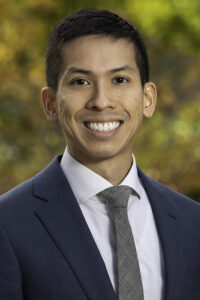
For surgeons-in-training, professional development time (colloquially known as “the research years”) is a welcome break from the rigors of surgical residency. A time to rest, reflect, and embark on new growth opportunities. A reprieve from the 6:00 a.m. (or earlier) morning rounds, middle of the night calls from the emergency department, and discerning gaze from our attendings. However, inevitably, the time comes to get back into clinical gear to finish the job that you started (residency). Cue the nervous jitters and sweaty palms. This is a universal feeling nearly all of us have felt before returning to patient care after a long hiatus. Rest assured, the first three years of your surgical training have prepared you well for your return—but there are a few things you can do to make the transition back as smooth as possible.
Trip down memory lane
Like all things in surgery, the devil is in the detail. While the basics of clinical care, such as determining operative candidacy or perioperative management, are likely old hat, little things will certainly have escaped your memory. This is especially true in the operating room (OR). Which side of the anastomosis is easier to sew first for a below-knee bypass? What sheath size does this device need again? How does attending X like their cases draped and positioned? Revisiting old case logs and surgical notes from years past may be helpful to jog your memory of these minute details. This is also a good time to dust off the old anatomy and operative technique textbooks. Like riding a bicycle, technically performing both open and endovascular cases “comes back fast.” However, a few afternoons of deliberate practice with a set of Castroviejos, 6-0 Prolene, some expired PTFE grafts and your favorite Spotify playlist is a nice way to get back into the swing. Likewise, for endovascular cases in particular, a proactive visit to the endovascular device storage room to get re-acquainted with the names of commonly used wires, catheters and sheaths is beneficial.
Showing your age
One of the joys of vascular surgery is the sheer pace of innovation in our field, with a never-ending stream of new devices and techniques to master. Coming back from research, I found myself encountering new acronyms that I had never heard of before. What is a DVA exactly? Is the TBE the same as TAMBE? Seemingly overnight, TCAR became a widely adopted procedure that I was now expected to be facile with. A quick meeting with your friendly neighborhood device representatives is helpful in this regard. They often can share with you the newest updated endograft configuration booklets, which are invaluable for case planning. A few months prior to starting back, you may also find it useful to listen in on your division’s weekly case conferences to get a grasp on current clinical algorithms. For example, our vascular lab and limb salvage program had adopted pedal acceleration time as a new surrogate marker for foot perfusion, which may affect which patients are offered intervention.
It’s all about the team
Returning from research years often coincides with transitioning from being a junior to senior resident. In your new role, managing a cadre of interns, junior residents and advanced practice providers becomes supremely important. Cases need to be appropriately and fairly assigned, consults evaluated and staffed efficiently, and patient concerns and dispositions thoroughly addressed. These tasks cannot be performed without a well-functioning team. I personally found team management was one of the most difficult aspects of my final years of residency. This aspect of training was seldom discussed, nor do we often have formal education or coaching to improve our “soft skills”—which are arguably right up there with gaining operative skill in order to be an effective surgeon. If they can spare the time, grabbing coffee to chat with the current chief residents on service is immensely helpful in this regard. Your colleagues can give you a primer on any new workflow changes, service logistics or other aspects of patient care that have changed since you were last on service. Leaning into your new role as chief resident is a daunting task, but is without a doubt a rewarding and beneficial experience as you embark on your journey to independent practice.
The week before you start
One of my friends told me that he channeled his nerves into preparation. For him, that meant rounding with the team a few days before he was to start running the service. This helped get him back into the wake-up schedule, and he got to know the patient on service and their plan. He was also able to pick the mind of the chief resident he was taking over from. He got to meet the support staff. He also cites the benefit of knowing the operative schedule so that he could prep for the cases. Finally, he says he went down to the hybrid room on a quiet afternoon and reminded himself of “what the buttons did.”
The first month back is going to be stressful. There’s just no way around it, but I hope this column helps someone make that transition back a little smoother.
Kenneth Tran is a vascular surgery resident at Stanford University, California.











